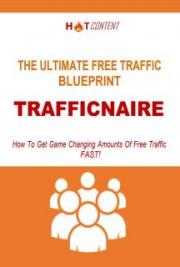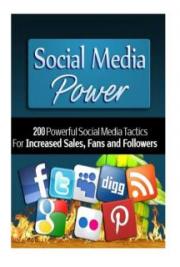David Bullock Jay Deragon Table of Contents

offer their spin on the definition of social media.
What Is Social Media?
It seems that everyone is trying to define social media and how to measure its ROI.
I get asked “ what is social media?” from every client I engage with. Everywhere I look online, people are presenting videos, presentations, white papers and even books that
Since all this social stuff is fairly new and evolving, definitions change. So do people’s perception of what it is. After reading, hearing and watching everyone’s definition, I thought about their perspectives. Then I thought about whether these perspectives effectively tell the story. Having something of a simple mind myself, I thought I’d try and condense the definitions down to something I hope is useful for everyone.
Social Media Is What?
When you break it all down, “social media is communications.” Communications is nothing new, except now the power of communicating has exploded with the participation of hundreds of millions of people engaging in dialog one-to-one to millions. If you haven’t noticed, there are over 200 million blogs, millions of YouTube video, billions of tweets, millions of individuals connecting on social networks. What are all these people doing? Communicating!
How Are We Communicating?
Social technology has simply accelerated communications. Before, people and institutions relied on phones, email, television, radio, marketing material and advertising to communicate. Now they all rely on this process called social media. Social media is a communications process leveraged by technology.
Yet the old process of communicating has shifted to a process that provides reach, richness, and affinity and enriched collaboration efforts. By the way, it is all instantaneous with no delays. Plus it pulls people and entire markets into conversations, instantaneously. How are we communicating? Instantaneously!
Simply stated, social media is a communication process that is revolutionizing everything tied to communication;
which, by the way, happens to be everything. The process of social media involves:
1. The use of technology
2. Identifying and providing valuable conversations
3. Distribution of conversations to appropriate and relevant markets
4. Methods and messages that create pull and engagement
5. Building and sustaining an audience of listeners (a.k.a. relationships)
6. Continually feeding the audience with conversational currency; value they can use
Making Money from Communication
Besides the fact that everyone's trying to define “social media” it seems that everyone wants a formula to define its ROI, as well. The simple answer to ROI is a question. Can you create any kind of return on anything without communicating? The answer is NO. Thus, the way you get an ROI from social media is to learn how to communicate more effectively, efficiently, relationally and in human (not advertising or marketing) terms.
Before you ask about what social media is or what the ROI is, ask yourself how you have measured the value of communications previously. Your answer is likely “we never have been able to."
The difference today is now you can measure the efficiency and effectiveness of communications down to specifics like whom, what, when and its value is, moment by moment. Communications is the essence of any economy. Like a bank, the higher the rate of interest, the more currency we create from our conversations. However, this currency is driven by the relevancy of our conversations and the use of said conversations by the market of people communicating.
This "conversation" currency is like money in that if your conversations create a rate of interest you are earning value created by the interest from people. The value created begins with a relationship with the "market of interest." (The market of interest includes people whom have an affinity and interest in your conversation.) Converting conversations to money is the end result of effectively and efficiently managing the process of communicating value to an audience.
 Systemic Effects of Social Media
Systemic Effects of Social Media
A systemic effect is when an outside or inside influence changes the entire system. A system is the collective processes that enable a business to create, distribute, engage and transact with a market. Market transactions come in the form of communications, which in the end create a financial transaction, which is the fuel for every business.
In any “system” the effectiveness of the connected processes aimed at end objectives determines the value of the final outcomes. Most businesses focus on outcome results, transactions, and when the results don’t come...managers look for “reasons” why.
System outcomes can be influenced by numerous factors such as:
1. Competitor innovation that attracts the market
2. Cost of goods increases and shrinking margins
3. Employee turnover which fuels inconsistency and waste
4. Customers leaving due to dissatisfaction
5. Market shifts that you are unaware of and don’t understand
The #1 influence that is threaded through all five examples above is communications.
If you're not listening to the market of conversations, you are missing strategic intelligence that could forewarn you of the five factors listed above- plus many others!
When Connections within the System Disconnect
Every business relies on the efficient and effective flow of information. When the flow of information slows down or breaks, then the cost increases due to delays, defects, and breakdowns. This, in turn, results in time being robbed away from actual productivity. Information flows through communications and those that communicate rely on the accuracy and relevancy of what is communicated. Otherwise the wrong communications drive the cost up and performance down.
Everyone knows what happens when a business doesn’t communicate (or communicates the wrong thing) to their market. We all know what it is like calling a business that we have bought from, only to be put on hold for more than 1 minute. Then when (if?) we finally get a real person on the line often they are rude, indifferent and worse provide no resolution to what we are seeking. These results are representative of a “systemic breakdown” between a business and its market.
Social Media’s Systemic Effect
Social media is and will continue to create systemic change for any and all businesses. Why? Because it is a new system of communications that connects people, customers, suppliers, employees and entire markets. The effect is disruptive, instantaneous and waits for no one. The impact of this new system of communications changes everything. It turns old business models upside down and inside out. What you thought was relevant to your business becomes irrelevant. What you thought was important becomes unimportant. What you used to define as “your business” gets redefined. Don’t believe any of this? Then just sit and watch as markets get redefined, disrupted or displaced by the influence of communications created by and for the benefit of any market. In other words, the people who consume that which you’ve tried forever to push.
When communications shift, it changes everything because everything is tied to communications.
Is Social Media Strategically Relevant?

As more and more organizations adopt the use of social media, there is an obvious difference in perspective as to whether social media is a strategy, a tactic or just another set of promising tools.
Our perspective drives our actions, attitudes and relevance of importance to our lives, our business and entire markets. Strategic relevance is a higher priority
than tactical relevance. Finding things like tools has less relevance and thus does not get thought of as "strategically important." Unless things are of strategic importance they will not get top management attention and support, it will be delegated down.
Is Social Media of Strategic Relevance?
In a Business Week article titled “
The Overlooked Side of Social Media” the Corporate Executive Board said
“Most companies are embracing social media—but too many are wasting their efforts through sloppy management” More than 70% of companies are already using social media; many are planning to increase their spending on social media across the coming years. Whether for learning from customers, building their brands or a range of other hoped-for outcomes, companies are clearly diving in.
Unfortunately, few have thought very hard about managing these initiatives. In a classic case or “ready, fire, aim,” companies are committing resources to social media efforts with very little process behind them. The result? A hodgepodge of unrelated initiatives, wheels re-invented and resources wasted.
The Corporate Executive Board has found that the best companies recognize that social media are just another set of promising tools and as such are to be understood, mastered, and used efficiently as they journey into the space. That journey has three stages:
• Discovery: At this stage, the organization is just finding out about the potential uses (and risks) of social media for its purposes and making initial forays. The goal: understanding (”could this work for us?”)
• Experimentation: As an organization does more with social media, the importance of learning efficiently becomes urgent. These bodies should develop and steward a learning agenda for the firm’s efforts, using each initiative to deliberately increase the institutional knowledge of social media use.
• Adoption: While few companies currently find themselves in this stage, those that do loosen their managerial posture, moving away from oversight toward support.
The short story: Social media isn’t a fad about to fade away; it’s a good idea for your organization to learn how to use it to your advantage. The best companies will learn faster and get more out of social media by aggressively managing their efforts.
Just Another Set of Promising Tools?
In my humble opinion the Corporate Executive Board quoted above is misleading CEOs by stating that social media are just another set of promising tools. Corporate Executive Board influences what and how CEOs think and this statement discounts the strategic importance of social media.
A tool is something you give to people to use for whatever purpose. A tactic is an initiative aimed at producing a result. A strategy is the science or art of combining and employing the means of beating competition in planning and directing organizational efforts aimed at winning markets. Communications is the means of deploying sound strategies.
Social media is a system of communications. What and how you communicate to suppliers, employees and markets is the science and art of using social media. If you deploy the system of social media without first considering the strategic implications and relevance to all stakeholders the “tools” may hurt your overall strategy. In other words, as the Corporate Executive Board states “Most companies are embracing social media—but too many are wasting their efforts through sloppy management.”
Not understanding or considering the strategic importance of social media is like saying communications is not of strategic relevance to reaching our goals. In case you didn’t know, what, how and whom you communicate with as well as the effectiveness and efficiency of your communications have serious strategic implications. Don’t believe it? Ask yourself how many strategies have failed because of a failure to communicate effectively and efficiently. More than you can imagine! Is Social Media Relevant & Relative?

The power of social media rests in using it to communicate content that is both relevant and relative to a specific audience.
What Is Relevant & Relative?
Let's start with definitions so we can understand the context of relevant and relative social media activities.
Relevant means:
1. bearing upon or connected with the matter in hand; pertinent to your market
Relative means:
1. something having, or standing in, some relation to something else
2. existing or having its specific nature only by relation to something else
3. having relation or connection to your market
4. having reference or regard; relevant to your markets interest
Now given these definitions for individuals and businesses to create traction with their social media activities, we MUST think about relevant issues and relative audiences we want to reach. If we don’t, then all we’re doing is pushing out mass media that isn’t relevant and relative to our audience. Sounds like a lot of people on Twitter and in mass media.
Where, What and Who?
In order to maximize the use of social media, one must first think about where, what and who. Where, what and who are relevant to understanding the dynamics of your market and how to create attention, attraction and an affinity to you instead of your competitors. A few details to put things into context:
1. "Where" is an indication of location. Location is an indication of market presence. Market presence is where you want to be otherwise you’ll end up communicating to the wrong market. So where is your market? How can you find them? Getting answers to these two questions takes knowledge of social technology that will save you time and make you more productive. Where is very relevant!
2. "What" is an indication of interest. Once you found where your market is, then the next step is to understand “what is the markets interest?” Interest is reflected by traffic, readers and propagation of content that is in context to the market's interest. Knowing what is of interest to your market enables you to think about what topics, conversations etc. you should create that pulls the market to you and away from them, your competition.
3. "Who" includes the people you want to influence. Influence is and always will be part of any effective sales process. However influence is no longer about mass media rather about “social media”. To understand social media read “Again, What is Social Media?” and hopefully this puts social media into context that is relevant and relative to “how” you reach people and influence them with relevant and relative content.
Where, What and Who are just the beginning stages of laying out an effective social media strategy. Finding the answers requires thinking, use of the right technology and the skills to do both. However, once you gain the where, what and who knowledge (which is David Bullock’s expertise) then you have to focus on the why, how and when (what I focus on). Unless you learn how to be relevant and relative you are likely to become irrelevant and not relative.
Does Where, When & What Matter?

Social technology provides an abundance of data. The data provides information, which can create knowledge if properly applied to gaining new knowledge. New knowledge can create new results if we apply theories based on the knowledge gained.
Social media is a communications system, which enables us to engage with interested markets. Markets represent people seeking something, someone or some value that
helps them learn to achieve new results. The technology enables us to watch where people are coming from, when they are coming, and what they consume. Given this information we can gain knowledge as to where people found our conversation, when they found it and what specific communications drew them to us. By assessing the where, when and what we can apply knowledge to improve our communications and engage a larger audience. Engaging a larger audience is an indicator of value, in terms of conversational currency.
Where Do They Find Your Conversation?
Distributing your conversational content to specific markets is important because if you're in the wrong market of conversations, you are not likely to create interest or affinity to markets that matter. Finding where your desired markets are engaged is the first step to “pulling” them to your conversation. I study my data daily. Do you?
When Do They Engage?
Knowing when people find you - and from where is important information that can lead you to understanding where and when markets are seeking what. Knowing this helps you formulate improved content that can pull more people to your conversation, thus increasing the size of an audience, which increases relevant reach.
What Drew Them To You?
"What" is relevant because it is an indicator of interest and findability. An audience interested in “what” you communicate provides you with opportunity to add value to what an audience may be seeking to find, if they can find you.
Adding value to an audience is the basis of establishing a relationship based on knowledge. Knowledge shared is an attraction, which creates an affinity, and subsequently a larger audience. Why? Because one person in the audience has similar affinity to others who are likely seeking the same knowledge.
Knowledge shared is valuable because it helps others gain something they didn’t previous have but were seeking.
Besides “Where, When and What,” the Question of “How” Matters Most
Knowing how to do anything is the most important knowledge to acquire, before you can do anything well. Knowing something that you didn’t previously know requires the acquisition of new knowledge. New knowledge doesn’t come from past experience; rather it comes from new experiences, new relationships and the learning that is gained from both. Providing people with knowledge they seek is the means for establishing a relationship based on value sought and found.
Regardless of what you sell or what business you are in where people will find you, when they find you and what draws them to you is vital to formulating, improving and distributing more value that will draw them back.Pushing yourself into where people are at when you want to isn’t what “pulls” people to you. Rather it “pushes” them away from you.
Gaining new knowledge from the data and information afforded to you can help you learn new knowledge that will pull your market to you. Eventually your audience just may end up transacting with you based on the value you’ve been providing. Transactions come from conversations that demonstrate and add value. Social media affords you the reach and the data to learn, from information, on how to apply new knowledge. What matters more than where, when and what...is how. Get it? We will examine how next.
Advertisers and marketers seem to ignore the value of new knowledge and keep doing what they’ve always done. Instead, they keep pushing their useless information that has no context to what is relevant and relative to specific audience new interest.
Does “How” Come After “What?”
Social technology offers individuals an array of places to establish one's presence in the market of conversations. These places, whether it be a blog, a social network or an established community, are “what” more and more people are learning about and joining.
Once people and organizations hear “what” it is and “what” it offers they first jump into whatever network they are most aware of (i.e. Facebook, Linkedin or Twitter). Next follows a natural question of “what is this and what do I do with it?”
"What" is Always the First Question
In the numerous presentations I have given to audiences all over the consistent, the first question is usually “what.” “What” is usually relative to the following issues:
1. What networks should I join?
2. What should I include in my profile?
3. What is the difference between Facebook, Linkedin and Twitter?
4. What kind of content should I create?
5. What tools should I use?
6. What is important to do first?
7. What are other companies doing well?
8. What revenue can I create from what?
9. What is social media?
10.What should my company do?
The answers to these "what" questions represent a desire to learn “what” to do. However the knowledge of "what" is only the first stage of learning and, while important, "what" is not the most important.
“What” is Important but “How” is More Important
People spend a lifetime learning "what ." Education teaches us what knowledge is required to pursue a profession. A profession requires specific knowledge that, when applied, creates value for the employer, the market and the individual. Those that exceed in their profession learn what knowledge they need but more importantly learn how to apply the knowledge to create more value for the market, which wants their knowledge and is willing to pay for it.You may have learned the “what” that is required to do certain things, but how you use what you learned is the difference between success and failure.
When people learn “what” all this social stuff is (and learning "what" is never-ending) the knowledge of “how to use it” to reach specific objectives isn’t something that can be learned quickly or by copying what and how others use it.
“How” Requires New Knowledge
Learning “how” to effectively use social technology isn’t about the technology. Rather it is more about a new system of communications, human behavior and communicating value (knowledge) that an audience is seeking. The knowledge of “how” is a process of discovery that changes frequently. Knowledge isn’t static and neither is human interest.
The “
what” questions are usually followed by “
how” questions which commonly include:
1. How do we reach specific audiences?
2. How do we track interest?
3. How do we attract our customers and prospects?
4. How do we create good content?
5. How do we know if we are doing the right things?
6. How do we know if we are doing things right?
7. How much time does it take?
8. How do we turn these efforts into revenue?
9. How do we keep up with all this stuff?
10.How much does it cost?
Since “how” is the most relevant issue to the use of “what,” everyone wants quick and cheap answers. It took most professionals four to eight years to acquire the “what” knowledge needed to pursue a profession. It takes the rest of your life to learn “how” to apply what you learned and create new knowledge that creates the value that serves your market, your family and yourself.
To learn “how,” you need to find the knowledge and the people that know “how” to apply it. They are few and far between.
Who Owns the “How” Company?


As indicated previously “how” is more important than "what." If “how” were a company, it would be a company whose only product or service was knowledge. Knowledge rests between the ears of every human being. Thus every person is in fact their own “how” company.
Every company has people aimed at “doing” what the executives think they are qualified and should be doing. The performance of any company is driven by “how” well they produce, distribute, communicate and perform for the customer. The best companies know “how” to create an environment that attracts the best people who know “how” to do certain things better than others. Thus the quality and performance of a company is directly related to “how” well people are enabled to do what they know “how” to do best.
An organization is a collection of people whom know “how” to do things well and how to do the right things together seamlessly. An environment that doesn’t enable people to do what they know “how to” well and instead enables others to do things and do the right things together is a company whose performance is questionable.
How is Your “How” Company Doing?
Individually we each own our own “how” company. “How” well we are doing is directly related to what we know and “how” we apply what we know to increasing value for someone or many. The value of what we know is directly related to "how" well we are learning to know more about how we do and what we do that improves value to people, processes, products and services. Ever notice that people always want to know “how” others were able to do something, achieve something or overcome something? The reason people what to know “how” is because knowledge is attra




 offer their spin on the definition of social media.
offer their spin on the definition of social media.








